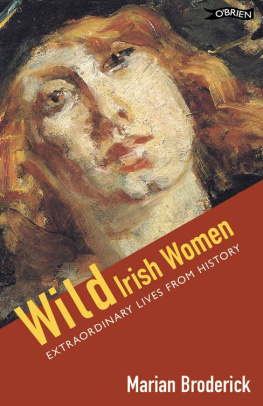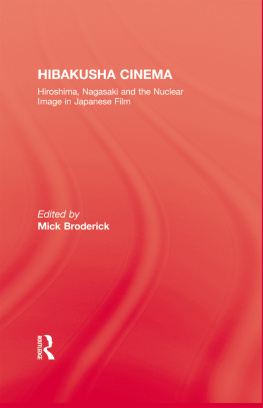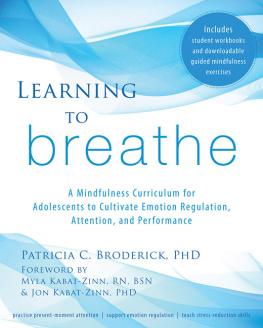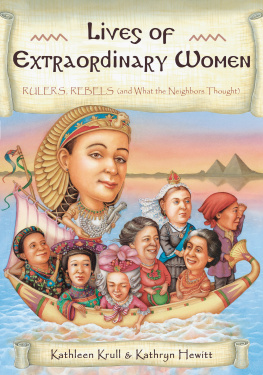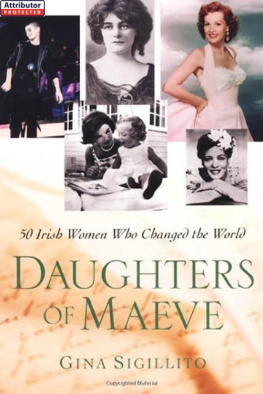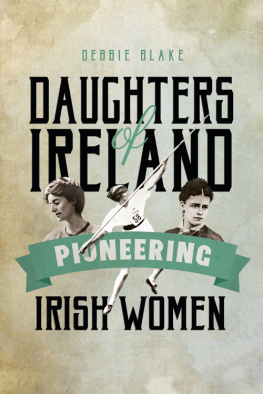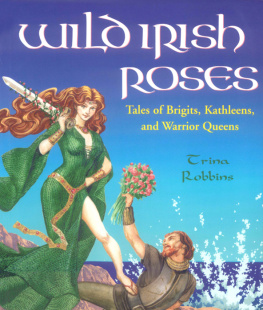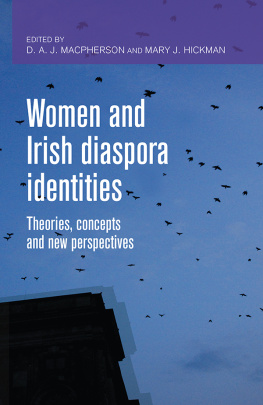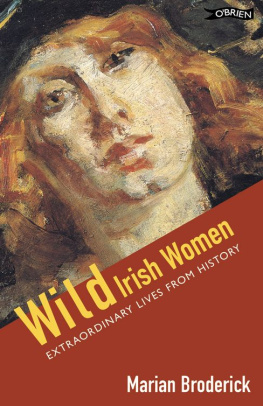My grateful thanks for help and encouragement to: Tom Rainsford; Dr Maria Luddy, University of Warwick; Rosemary Raughter of UCD; Terry Wogan at the Civic Museum, Dublin; Ciara McKenna, the National Council for Women, Ireland; Rena at the Gregory/Kiltartan Museum; staff at the National Library, Dublin; Dublin Corporation Public Libraries; Liz Broderick and Frank Cormack; Maeve Broderick and Nigel Kane; Pearse Broderick and Clair Evans; Aidan Byrne; Anne Conaghan; Charlotte Lochhead; Amanda Brace; Carol Cooper; Suzy Fotheringham; staff at the British Library, London; and all at The OBrien Press, especially editor Rachel Pierce and designer Emma Byrne. The author and publisher also wish to acknowledge the kind help of Douglas Sealy, Dr and Mrs Michael Purser, Mr Brian Caine, Dr Hugh Weir and The Hon. Mrs Grania Weir, Joanna Finegan, Grinne Mac Lochlainn, Sr Agnes Gleeson, the Estate of Eils Dillon for permission to reproduce The Lament for Arthur OLeary (www.eilisdillon.com), and Mairad Ashe FitzGerald.
With all the presumption of the truly underqualified, I decided to write this book because I felt that my two favourite subjects Irish history and womens studies did not meet up often enough. The place of Irish women in history, or any women in any history for that matter, has been largely ignored. My intention is that this collection should go some small way to redress the balance.
There are three criteria for inclusion in this collection. The first is that these women are all fascinating. Although not necessarily the wild Irish girls of Sydney Owensons famous novel, to which the title of this book refers, they are certainly women who broke the rules in days when rule-breaking was riskier than it is today. Most were unselfconscious about this, the very last thing on their minds a desire to be seen as pioneering women. Some, however, were unashamed limelight-lovers who, far from being mugged by Fate, were only too aware of their moments of destiny and enjoyed them to the full.
The second criterion is an Irish connection, and as one might expect from a London-Irish author, this can be pretty tenuous. Though most of the women in the book are Irish-born and bred, there are those, like myself, who merely limp in with an Irish background. The Irishness of my women is variously and liberally mixed and diluted with the cultures of Europe, the USA, South America, the Caribbean, Japan and Australasia. (Then theres Katherine Parnell, whos just plain English!)
Lastly, it should be obvious that, since this is a historical collection, none of the women in this book is living although the redoubtable Old Countess of Desmond might well be had she not fallen out of a tree at age 140. Although cynics might suggest that my decision to write only about dead women is not entirely unconnected with libel law, it would be more accurate to cite the calibre of the increasing number of women alive today that are represented in politics, public life, arts and entertainment. Once started on some of these women, it would be difficult to know when to stop and this would be a completely different book.
The women in this collection enjoy varying degrees of fame, or notoriety . Some, such as Countess Markievicz and Sarah Purser, are famous in their own right. Others bear household names, such as Yeats, Wilde and Parnell, yet remain shadowy figures. Who would think of the artistic sisters Lily and Lolly Yeats before their genius brother William Butler, even though WBs early poems would never have been written without his sisters financial support? Similarly, who would think of the brilliant and deeply eccentric Lady Jane Wilde instead of Oscar, even though his celebrated style and wit was based largely on hers?
I have balanced the famous names in the book with the inclusion of some little-known but colourful characters. These include Biddy Early, animal-healer and poteen-drinker extraordinaire; Lady Betty, murderer and public executioner; the cross-dressing soldier Kit Cavanagh; and Irelands last changeling, Bridget Cleary.
The response to the first edition showed that the stories of these and all the other women in the book still have the power to engage. Wild IrishWomen is a book of stories heroic, farcical, shocking, inspiring and tragic and at the centre of each is a real, breathing, living woman. Alexander Pope held the view that most women have no characters at all, but I hope these stories demonstrate the opposite.
Marian Broderick
August 2002
I am ambitious, yet the strongest point of my ambition is to be every inch a woman.
Lady Sydney Morgan
17671849
Novelist, best known for her childrens stories and her novels of Irish life, such as Castle Rackrent (1800) and The Absentee (1812)
Maria Edgeworth was the second of the twenty-two children of the extraordinary Richard Lovell Edgeworth, who was a liberal thinker of enormous energy, author, inventor, educationalist, magistrate and, as heir to a family estate in County Longford, pillar of Irelands Anglo-Irish landed gentry. Maria was born in her mothers home at Blackbourton, Oxfordshire, on New Years Day 1767, the product of an unhappy first marriage between Richard and Anna Maria Elers. When Maria was six years old her mother died as a result of that common occupational hazard: childbirth. Her father married the beautiful Honora Sneyd within a few months and moved the whole family home to Ireland.
Two years later, at the age of eight, Maria was sent away from Edgeworthstown to be educated in England. She did not return for seven years. When Maria came back in 1782, Honora had died of consumption and had been quickly replaced as the mistress of Edgeworthstown by her sister, Elizabeth Sneyd.
Marias home was now an Irish estate where her father was a mini-king. Surrounded by his children, extended family ( including two more unmarried Sneyd sisters), servants and tenants, Marias father ruled as a benevolent dictator. In sharp contrast to the attitudes of most Anglo-Irish landlords of the day, however, Richard felt a responsibility toward his tenants. He ignored the Penal Laws to grant security of tenure to tenants who improved their land. Equally unconventionally, he adhered to the principles of the French philosopher Jean Jacques Rousseau in relation to the education of his family. This involved encouraging the child to enjoy his or her learning experiences, and teaching the child to be self-sufficient and resourceful. Richard was universally adored by the locals, by his wife and children, but most of all by Maria, who spent her life striving to live up to his high expectations.

